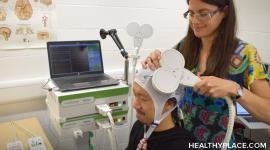Adlerian Therapy: What Is It and How Does It Work

Adlerian therapy is a mode of psychoeducational therapy comprised of four main stages. It is both humanistic, meaning it focuses on a person's individual qualities and behavior, and goal-orientated, in that is focuses on the future rather than the past. Using this approach, the therapist works to understand the patient's unique way of thinking and how thoughts influence action.
Adlerian therapy has proven its effectiveness over the past 30 years and is deemed to be a positive and hopeful approach to treating many types of mental illness and mental disorders.
Adlerian Therapy: Who Is It For?
Adlerian therapy can be applied to almost anyone at any time. It can be particularly helpful for people experiencing anxiety or conduct disorder, though it can be used to treat virtually any mental health condition or situation.
Alfred Adler, the founder of Adlerian therapy and the Adlerian theory of personality, was part of Sigmund Freud’s circle. However, Adler began to disagree with Freud’s theories (mainly his opinion that sex is the driver of all human behavior) and went on to develop his own mode of therapy rooted in birth order and child development. He also coined what is known to be the first-ever form of family counseling.
Although the approach is future-focused rather than retrospective, Adlerian therapy evaluates patients by looking back through time for causes of their thinking patterns and behavior. Therapists focus on personality, birth order, life choices and social interests with a goal of overcoming problems by making relevant lifestyle adjustments
The 4 Stages of Adlerian Therapy
Adlerian therapy is extremely adaptable, and therapists will focus on the individual needs and history of each patient. However, like all types of treatment, the Adlerian model is based around a framework.
The four stages (or steps) of Adlerian therapy are:
- Engagement: This is where the therapist and patient agree to engage with the problem and create an alliance to try to solve it.
- Assessment: During the assessment stage, the therapist will analyze the patient’s history, birth order and early childhood memories.
- Insight: The therapist will then help the patient to see his or her situation differently by offering insight into personality and childhood influences.
- Reorientation: The reorientation phase is where the therapist instructs the client to make lifestyle changes or engage in certain activities that reinforce the insight provided. At this point, the goal of each patient will be slightly different, but it is the job of the practitioner to be the "best therapist that the client requires." This may sometimes mean adjusting the Adlerian approach.
The Adlerian Theory of Personality
The Adlerian Theory of Personality (also known as Individual Psychology) is similar to Freud's Personality Theory. The main difference is that Adler believed the primary driver of human behavior is the need to overcome feelings of inferiority that derive from infanthood. Adler's Personality Theory is rooted in the belief that all humans act, in one way or another, to achieve perfection and superiority.
This theory ties in with Adler's ideas about birth order being the biggest influence in a person's life. For instance, he believed that firstborn children often lack independence, which results in feelings of inferiority. Similarly, middle children may become competitive to try to overcome feeling inferior to their siblings. The main criticism of the Adlerian Theory of Personality is that it's not grounded in actual science, as there is no way to measure inferiority or superiority on a scale.
Adler’s Personality Theory also categorizes people loosely into four types:
- Ruling types: People who will make others feel inferior to achieve superiority
- Learning types: Those who depend on others to deal with life’s difficulties. These types of people are sensitive and often develop phobias, obsessions and anxiety
- Avoiding types: People who survive by avoiding real life.
- Socially useful types: Adlerian theory believes these are healthy people who take an interest in others and have the right balance of energy.
Modern Adlerian therapy may only borrow some aspects from Adler's Personality Theory, and they may combine the four-step approach with other humanistic practices. On the whole, Adlerian therapy is a positive, solution-focused treatment that is highly individualized to the patient, so it can be useful in a variety of situations.
APA Reference
Smith, E.
(2019, August 18). Adlerian Therapy: What Is It and How Does It Work, HealthyPlace. Retrieved
on 2025, December 11 from https://www.healthyplace.com/other-info/mental-illness-overview/adlerian-therapy-what-is-it-and-how-does-it-work



